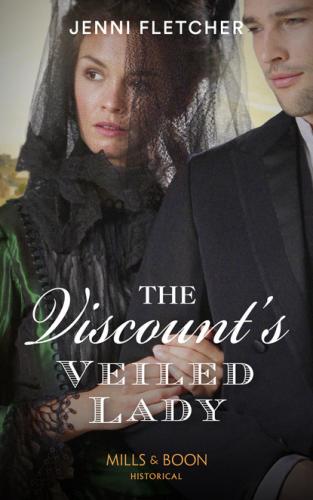The Viscount’s Veiled Lady. Jenni Fletcher
rel="nofollow" href="#ua2cd8e14-eba6-5270-8358-079defb29187"> Chapter Twelve
Whitby jet is a semi-precious black gemstone that has been used in jewellery-making since the Bronze Age. It is renowned for being both lightweight and incredibly hard, as well as for taking on a vibrant shine when polished. Formed from the fossilised remains of Araucaria trees (early ancestors of modern monkey-puzzle trees) it can still be found in a stretch of shale along the North Yorkshire coastline, now known as the Heritage Coast.
Examples of Whitby jet were displayed at the Great Exhibition in 1851 and it became popular after the death of Prince Albert in 1861 when Queen Victoria went into a state of semi-permanent mourning. Mourning itself became particularly ritualised during this era with widows forced to become almost living memorials to their deceased husbands.
By the 1870s, the demand for Whitby jet was at its height. Around 1,500 jet workers were employed in approximately 200 jet workshops throughout the town, but, unfortunately, it was a boom industry that lasted for around a century and then fell out of favour, partly because of cheaper imports and partly because it failed to keep up with changes in fashion. Jet mining itself was made illegal in the late nineteenth century to prevent coastal erosion.
As a result, many traditional methods of carving have been lost and modern jet workers are largely self-taught. I’m grateful to Hal and Imogen Redvers-Jones at the Whitby Jet Heritage Centre for answering my questions about Victorian jet-carving techniques and to Botham’s of Whitby for providing so much delicious research!
Whitby, North Yorkshire—July, 1872
‘You want me to do what?’
Frances Webster dropped the piece of jagged black stone she was polishing on to the table with a thud.
‘I want you to visit Arthur Amberton for me.’ Her sister Lydia draped herself over a chaise longue by the window, somehow managing to look both spectacularly beautiful and sound utterly shameless. ‘It’s not as if I can visit a bachelor on my own, is it? I’m a respectable widow.’
‘And I’m a respectable spinster. That’s worse.’
‘Yes, but you’re always wandering along the beach by yourself. Anyway, it’s different for you.’
‘Why?’
‘Oh, don’t be so tiresome.’ Lydia shot her a look that suggested the answer ought to be obvious. ‘You know perfectly well why, Frannie.’
‘No. I’m sure I do not.’
Frances gritted her teeth at the hated pet name. She suspected her older sister did it on purpose, as if she were still a child to be ordered around and not a woman who’d turned twenty-two that past spring. It was also obvious what why referred to. Lydia was forever dropping hints about her scarred appearance without ever going so far as to actually refer to it directly. Well, if she had something to say, then for once she could just say it out loud.
‘I mean it doesn’t matter if anyone does see you with him. It’s hardly your fault, I know, but you’re not exactly the kind of woman a gentleman would dally with, are you? Your reputation would be perfectly safe.’ Lydia heaved a sigh. ‘It’s such a pity when you used to be so pretty. If only you’d married Leo when you had the chance—’
‘Enough!’ Frances raised a hand, deciding that she’d heard quite sufficient after all. ‘You’re right. I’m sure my face would repel any man.’
‘Well, I wouldn’t put it quite like that.’
Not in her hearing perhaps, Frances thought icily, though what her sister and mother said about her behind her back would probably convince her to wear a bag over her head for the rest of her life. They both thought of her facial scarring as the worst misfortune that might have befallen her on the very morning of her eighteenth birthday, but then both of them were beautiful. In her mid-fifties, their mother was still a strikingly attractive woman, with only the faintest touch of silver in her dark hair and an almost unnaturally smooth, porcelain complexion. Walking side by side with her eldest daughter, the pair of them were capable of turning every male head in Whitby.
Of course there had been a time, not so long ago either, when she wouldn’t have looked so out of place beside them. With only a six-year gap in their ages, both she and Lydia had inherited their mother’s fine looks and statuesque figure, though it had taken her own curves so long to appear that she’d thought they weren’t coming at all. She’d been a late bloomer; though when she finally had, she’d shown signs of surpassing even her sister in beauty, or so their mother had once told her to Lydia’s furious chagrin.
Her accident had put paid to all of that, however, so that now, although they shared the same oval face, dark eyes and chocolate-coloured hair, they were hardly two sides of the same coin any more, rather two different coins altogether, one lustrous and shiny, the other dinted and tarnished.
‘Now will you take a message for me or not?’ Lydia was starting to sound impatient.
‘No, and I can’t believe you’re even suggesting it! John’s only been dead for ten months.’
‘Exactly!’
